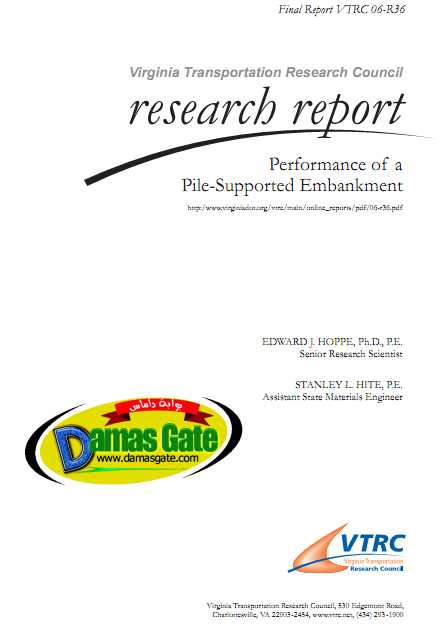Performance of a Pile-Supported Embankment

INTRODUCTION
In 2004, the Virginia Department of Transportation (VDOT) initiated corridor improvements along Route 33 in and around the Town of West Point. The project starts at F Street in West Point and ends at Ashby Road in King and Queen County. It comprises three road sections and two bridges, one over the West Point Creek and the other over the Mattaponi River.
Marginal soil conditions presented significant construction challenges. The site is
located in a marshy area, underlain by very soft deposits of normally consolidated marine clays. It is technically difficult to construct an embankment over a soil that has a very low bearing capacity and that is prone to relatively large settlements. Failure often occurs when the underlying foundation soil cannot support the weight of a new embankment. To address this problem, various ground stabilization techniques, including wick drains and pile-supported embankment, were specified along some sections of the proposed roadway.
Pile-supported embankments have not been constructed by VDOT in the past, partly
because of the additional costs involved. The embankment at West Point is the first one of its kind built in Virginia. Consequently, the Virginia Transportation Research Council (VTRC) was asked to perform a field assessment and provide feedback for similar ground improvement projects that may be planned by VDOT in the future.
PURPOSE AND SCOPE
The purpose of this study was to evaluate the field performance of a pile-supported embankment constructed over the eastern approach (King and Queen County) to the new bridge over the Mattaponi River (replacing the existing Lord Delaware Bridge). The scope of work included field instrumentation and data gathering as related to stress transfer and settlement. The objective was to measure actual soil pressures that are exerted at the geotextile fabric bridging pile caps and to measure stresses acting over pile caps. In addition, data analysis was to be carried out to provide information that VDOT engineers could use to optimize future designs of pile-supported embankments.
Download
http://s18.alxa.net/s18/srvs2/02/001...Embankment.rar